The multi-lamp driving scheme only needs to add some supporting circuits, and each channel in the DS3984 and DS3988 can drive more than one CCFL. Figure 1 shows the application circuit for driving four lamps per channel. With only a slight adjustment, you can also drive two, three, four, or more lights per channel.
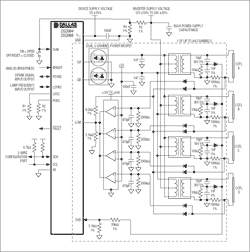
Click for larger image Figure 1. Application example of driving four lamps per channel
From Figure 2 we can also see a disadvantage when using a single channel to drive multiple lamps. Since the feedback signal amplitude of lamp B is higher than that of other lamps, the duty ratio of the power MOSFET shared by multiple lamps will be controlled by it, so that lamp B controls the power supplied to other lamps. As shown in Figure 2, this makes the current drawn by the other lamps smaller than its target value of 5mARMS.
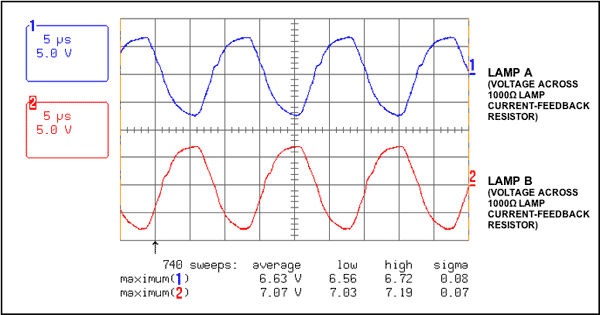
Figure 2. Voltage across the lamp current detection resistor (only two lamps are shown)
Figure 3 shows the situation when the lamp current detection signal is converted to the LCM input of the DS3984 and DS3988. Unlike the scheme for driving a single lamp per channel, AC coupling capacitors are not used for the LCM input in a multi-lamp application per channel. The DS3984 / DS3988 controller controls the lamp current based on the peak signal measured at the LCM input. Without AC coupling capacitors, the peak control level is the DC common voltage (1.35V) plus the lamp regulation threshold (1.0V), or 2.35V (average). Therefore, the peak value of the current detection signal generated by the detection resistor must be attenuated to the target value of 2.35VPEAK and then sent to the LCM, so that the device can control the lamp current at an appropriate level. For example: In Figure 1, the 7.07VPEAK signal is generated on the 1000R detection resistor, and it must be attenuated to 2.35VPEAK before reaching the LCM input.
When the signal passes through the small signal diode, the amplitude will be attenuated by about 500mV. The rest is attenuated by a resistor divider. In the example shown in Figure 1, the resistor divider consists of 8.2kR and 5.1kR resistors. The 50k input impedance inside the LCM pin will cause slight attenuation. The internal 50kR impedance reduces the 5.1kR divider resistance to 4630R; making the attenuation increase.
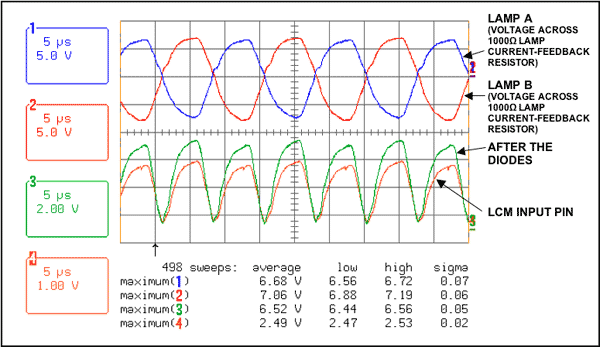
Figure 3. Lamp current feedback signal path
Figure 4 shows the overvoltage feedback signal input to the OVD terminal of the DS3984 or DS3988. When the signal passes through the small signal diode, the amplitude is reduced by about 500mV. A resistor divider is used to further attenuate it. In the circuit of Figure 1, the resistor divider consists of 33kR and 5.1kR resistors. The 50kR input impedance of the OVD pin will increase the attenuation slightly. This 50kR input impedance reduces the 5.1kR divider resistance to 4630R, thus increasing the amount of attenuation.
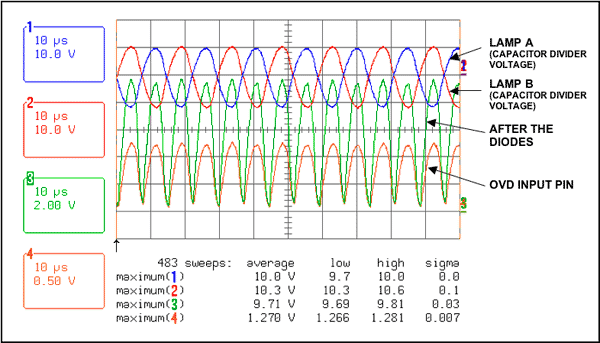
Figure 4. The output voltage of the capacitive voltage divider and the OVD signal path
In order to ensure that all lamps are properly lit and detect whether any lamps are extinguished during normal operation, some additional circuits must be used to pull down the LCM input when there are any unlit lamps. Four comparators LM339 can be used to achieve this purpose. Each comparator corresponds to a lamp. If all four lamps are lit, the forward voltage swing on the lamp current detection resistor will charge the peak detector (consisting of a diode, a 470pF capacitor and a 330k resistor) above the 5V reference voltage. At the same time, the open collector outputs of the four comparators (they are wired or connected) are turned off, allowing the lamp current signal to enter the LCM pin. If one or more lamps are not lit, the corresponding comparator pulls the LCM pin low, telling the DS3984 / DS3988 that there are still unlit lamps.
Figure 5 shows the peak detection signal that appears at the input of the comparator. Figures 6, 7, and 8 show the normal and abnormal start-up conditions and the conditions when a lamp is open.
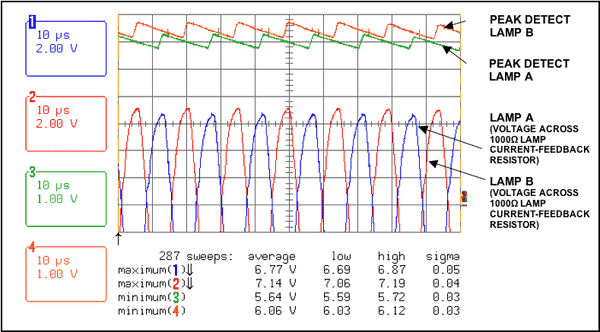
Figure 5. Peak detection signal
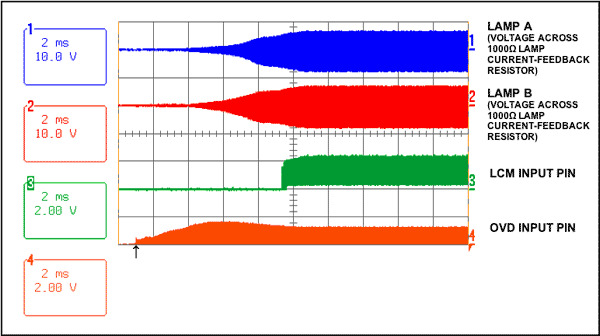
Figure 6. Normal start
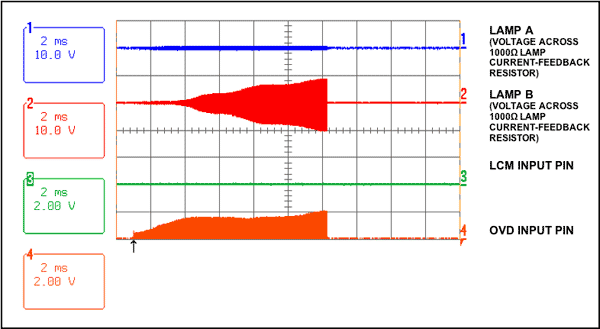
Figure 7. Start-up situation when lamp A is off
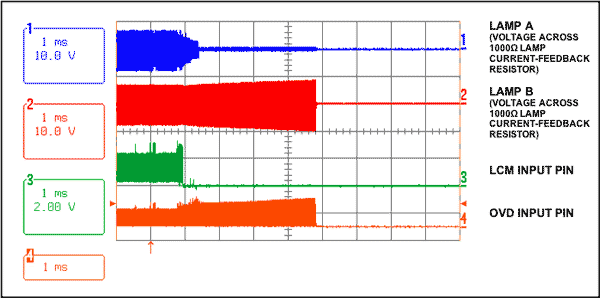
Figure 8. The situation when lamp A is off during normal operation
Magnetic USB Cable refers to the magnet male and female to suction mode to connect the charging effect of the charging cable. Rely on the magnet magnetic attraction, traditional cable connector is separated from the cable body, both through magnetic in automatic adsorption within a certain distance, so called magnetic suction cable magnetic suction cable, magnetic suction cable, magnetic suction charging cable, etc.so that we can realize single hand plug cable, and in the process of actual use, the magnetic suction charging cable is safer than ordinary USB Cable.
Interface widely applicable to mainstream models.Thin small size for wide, differs from the traditional life of the common data interface,a new type of magnetic suction cable charging interface on the size of the thin body, even mobile phones with a set of use, magnetic suction cable also apply to the charging 90% of cell phone sets, don't need to pick a set can be used directly, so it is suitable for use in the increasingly miniaturization of electronic equipment, Can withstand more than 50,000 times of repeated insertion and removal. Fast transmission speed, perfectly compatible with mobile phone data transmission.
It is easy to use,can be single-hand operation,regardless of positive and negative, random insertion, the error rate is zero, even if the 3-year-old children can not be inserted wrong, very suitable for driving, sleeping and other life scenarios. The appearance of magnetic charging cable has impacted the market of Usb C Cable, because magnetic charging cable is much better than ordinary data cable, bringing too much convenience to life. The feeling of user experience has also risen, and more people begin to enjoy the sense of convenience brought by magnetic charging cable to life.
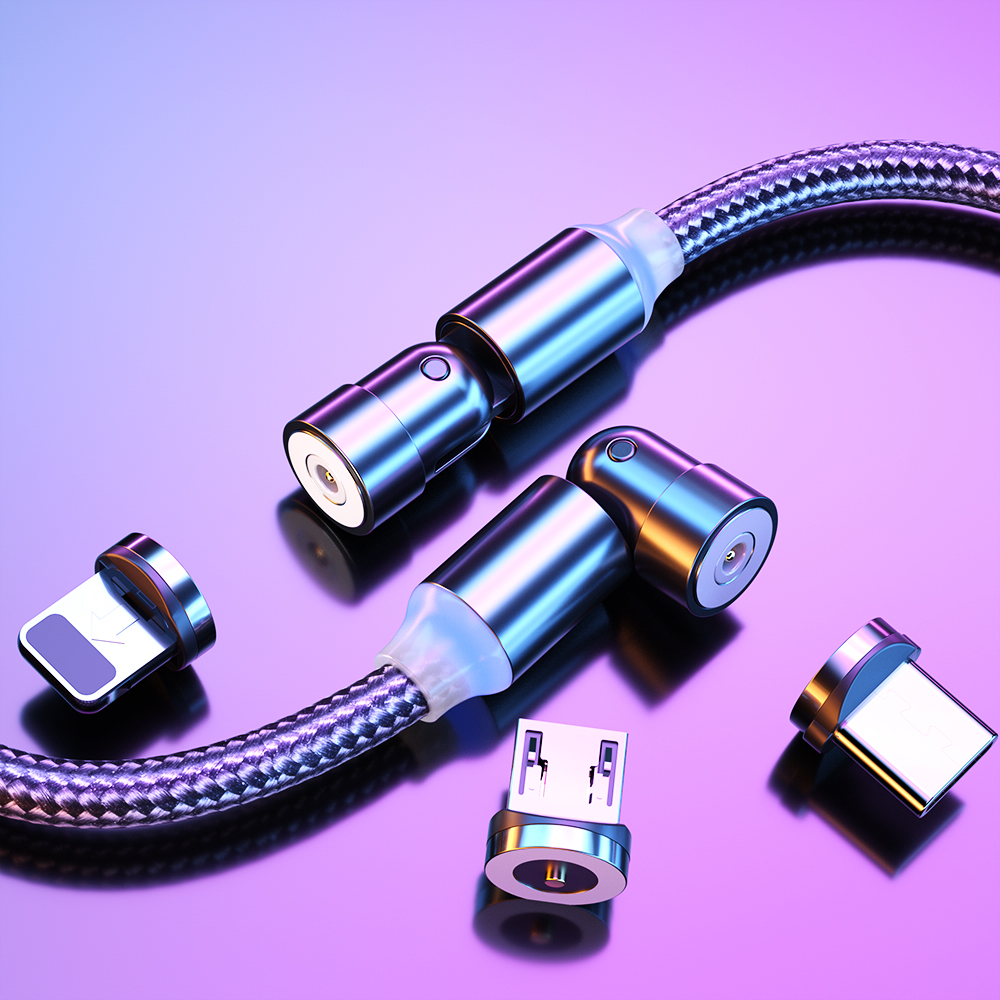
Magnetic Usb Cable,5A Usb Cable,Magnetic Micro Usb Cable,Led Magnetic Charging Cable
Henan Yijiao Trading Co., Ltd , https://www.yijiaousb.com